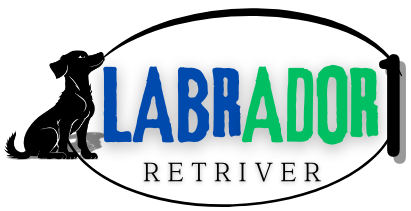Guide to the Catahoula Lab Retriever Mix: personality and health
The Catahoula Lab Retriever Mix may be the ideal addition to your family if you’re considering getting a new four-legged friend. The best qualities of two incredible breeds—the Labrador Retriever and the Catahoula Leopard Dog—are combined in this mix, which is well-known for its special fusion of intelligence, loyalty, and energy. However, it’s crucial to comprehend their personality, medical requirements, and proper care before bringing one home. Everything you need to know about this amazing dog breed mix will be covered in this guide.
Table of Contents
Understanding the Catahoula Lab Retriever Mix Breed

What Is a Catahoula Lab Retriever Mix?
The Louisiana Catahoula Leopard Dog and the enduringly popular Labrador Retriever were crossed to create the Catahoula Lab Retriever Mix. The combination of the two breeds’ strong ancestry and unique traits results in a dog that is intelligent, devoted, and full of energy.
- The Catahoula Leopard Dog is renowned for its striking coat patterns, natural hunting instincts, and high energy levels. Originating in Louisiana, it has been prized for its versatility and work ethic.
- The Labrador Retriever is one of the most beloved family dogs worldwide, famous for its friendly demeanor, trainability, and gentle nature.
When you mix these two breeds, you get a dog that is not only athletic and strong but also deeply affectionate and eager to please.
Physical Characteristics and Appearance
Since the Catahoula Lab Retriever Mix is a blend, their appearance can vary quite a bit. Here’s what you can typically expect:
- Size: Medium to large sized, usually weighing between 50 to 80 pounds (22 to 36 kg).
- Height: Typically, the shoulder length is between 21 and 26 inches.
- Coat: Often short to medium length with a mix of colors and patterns, including spots, patches, or solid colors inherited from the Catahoula parent. The coat tends to be dense and weather-resistant thanks to the Labrador genes.
| Age Group | Weight Range (lbs) | Height Range (inches) |
|---|---|---|
| Puppy | 10 – 30 | 8 – 15 |
| Adult | 50 – 80 | 21 – 26 |
| Senior | 45 – 75 | 21 – 26 |
These dogs are athletic and well-muscled, perfect for active families or individuals who enjoy outdoor activities.
Personality Traits of the Catahoula Lab Retriever Mix
Temperament and Behavior
You’ll find that the Catahoula Lab Retriever Mix has a personality as dynamic as its appearance. They tend to be:
- Loyal and Protective: They bond closely with their family and can be watchful around strangers, making them good watchdogs.
- Intelligent and Trainable: Thanks to the Labrador’s ease of training combined with the Catahoula’s sharp instincts, they learn commands quickly and love challenges.
- Energetic and Playful: These dogs thrive on physical activity. Without enough exercise, they might develop unwanted behaviors out of boredom.
In essence, if you enjoy an active lifestyle and want a dog that can keep up, this mix will match your energy perfectly.
Socialization and Compatibility
Because the Catahoula Lab Retriever Mix inherits traits from two different breeds, their social needs can vary:
- With Children: They generally do well with kids, especially when raised together, thanks to their affectionate nature.
- With Other Pets: Early socialization is key if you have other pets. They can get along well with other dogs and even cats, but supervision and training are important.
- Strangers: While friendly, they might be cautious with new people. Proper socialization from a young age helps them stay balanced and confident.
Advice: Gradually expose your dog to various settings and people. Good experiences foster the growth of a well-rounded, gregarious friend.
Mental and Physical Stimulation Needs
To keep your Catahoula Lab Retriever Mix happy, you’ll want to focus on both their mind and body:
- Exercise: At least 1-2 hours of daily exercise such as brisk walks, runs, or hikes.
- Play: Interactive games like fetch, tug-of-war, or swimming are excellent.
- Training: Challenge their minds with obedience training, puzzle toys, or scent work.
These dogs may become agitated or destructive if they don’t have appropriate ways to release their energy.
Health and Wellness of the Catahoula Lab Retriever Mix

Common Health Issues to Watch For
Every dog breed has potential health concerns, and this mix is no exception. You should be aware of inherited issues from both parent breeds, including:
- Hip and Elbow Dysplasia: Common in active, medium-to-large dogs; regular vet check-ups and proper exercise can help reduce risk.
- Eye Conditions: The Catahoula side may carry risks like progressive retinal atrophy or cataracts. Regular eye exams are recommended.
- Ear Infections: Due to their active nature and sometimes floppy ears, keep ears clean and dry.
Knowing what to watch for and scheduling regular veterinary care will keep your dog healthy and comfortable.
Nutrition and Diet Recommendations
Your dog’s diet plays a huge role in their overall health and vitality. Here’s what you need to consider:
- Good Protein: Promotes muscle growth and repair. Select dog foods that contain meat as the primary ingredient.
- Balanced Macronutrients: A diet with about 30-40% protein, 30-40% carbohydrates, and 20-30% healthy fats usually works well.
- Age-Appropriate Formulas: Puppies, adults, and seniors have different needs.
| Age Group | Daily Caloric Needs (approx.) | Feeding Frequency |
|---|---|---|
| Puppy | 900 – 1400 kcal | 3-4 small meals per day |
| Adult | 1500 – 2200 kcal | 2 meals per day |
| Senior | 1200 – 1800 kcal | 2 smaller meals per day |
Avoid feeding table scraps or foods toxic to dogs (chocolate, grapes, onions).
Exercise and Weight Management
Maintaining your dog’s weight is essential to prevent joint strain and chronic illness:
- Exercise: Daily physical activity tailored to their energy level.
- Weight Checks: Regular weigh-ins at home or vet visits help catch any weight gain early.
- Balanced Diet: Portion control based on age and activity.
| Life Stage | Ideal Weight Range (lbs) | Suggested Exercise Time |
|---|---|---|
| Puppy | 10 – 30 | 30-60 mins/day |
| Adult | 50 – 80 | 60-120 mins/day |
| Senior | 45 – 75 | 30-60 mins/day |
Tips for Taking Care of and Grooming Your Catahoula Lab Retriever Mix

Grooming isn’t just about keeping your dog looking good — it’s vital for health:
- Brushing: Brushing once a week keeps the coat healthy and minimizes shedding. Make use of a medium-bristle brush.
- Bathing: Bathe your dog every 6-8 weeks or as needed to avoid drying out the skin.
- Ear Care: Clean ears weekly to prevent infections. Use vet-approved ear cleaners.
- Nail Trimming: Trim nails every 3-4 weeks to avoid discomfort or injury.
- Dental Hygiene: Brush teeth 2-3 times weekly to prevent dental diseases.
Seasonal care, such as flea and tick prevention during warm months, is also essential.
Training Your Catahoula Lab Retriever Mix
Basic Obedience Training
An early training regimen lays the groundwork for a well-behaved dog:
- Start early: As early as 8 weeks of age, start training.
- Important instructions are to sit, remain, come, heel, and get out.
- Use Positive Reinforcement: Give praise and treats to students who behave well.
- Consistency: To strengthen learning, practice every day.
Advanced Training and Activities
If you want to take training further, your dog will love advanced challenges:
- Agility Training: This mix excels at obstacle courses and agility sports.
- Scent Work: Tap into their natural tracking instincts.
- Advanced Obedience: Teach tricks and complex commands to keep their minds sharp.
Training improves your relationship while also stimulating your mind.
Questions and Answers Regarding the Catahoula Lab Retriever Mix

What is a Catahoula Lab Retriever Mix’s typical lifespan?
A: Typically, they live between 10 to 14 years, depending on genetics, diet, and care.
How much exercise does this breed mix need daily?
A: At least 1 to 2 hours of physical activity and mental stimulation to stay healthy and happy.
Are they good with children and other pets?
A: Yes, especially when socialized early; they are usually affectionate and playful with kids and other pets.
What are the most common health problems?
A: Watch for hip dysplasia, eye conditions, and ear infections. Regular vet visits are crucial.
How often should I groom my Catahoula Lab Retriever Mix?
A: Regular nail care and ear cleaning, along with weekly brushing and bathing every six to eight weeks.
Can the Catahoula Lab Retriever Mix live in an apartment?
A: They can adjust if they receive enough exercise each day, but homes with plenty of room for movement are ideal.
Conclusion: Is the Catahoula Lab Retriever Mix Right for You?
The Catahoula Lab Retriever Mix might be the ideal companion for you if you’re looking for a loving, devoted, and active animal that can keep up with your busy schedule. They are ideal for families, outdoor enthusiasts, and anybody else who is prepared to put in the time to train and exercise because of their unique combination of intelligence, athleticism, and affection. Keep in mind that providing the best life for your dog depends on your comprehension of their personality and medical requirements.







